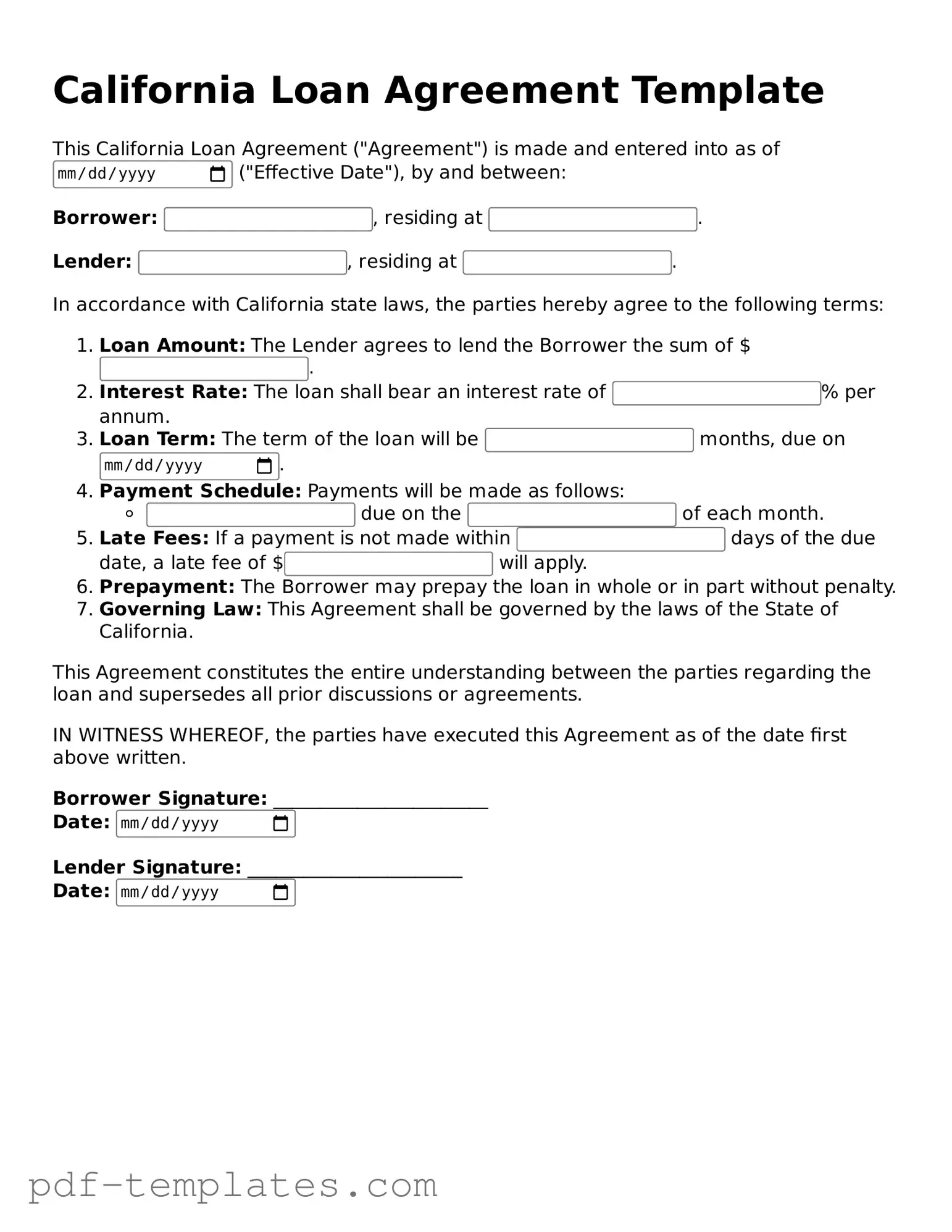The California Loan Agreement form shares similarities with the Promissory Note. Both documents outline the terms of a loan, including the amount borrowed, interest rate, and repayment schedule. A Promissory Note is often a standalone document that emphasizes the borrower's promise to repay the loan, while the Loan Agreement may include additional terms and conditions that govern the relationship between the lender and borrower. This makes the Promissory Note more focused on the borrower's obligations, whereas the Loan Agreement provides a broader framework for the transaction.
Another document akin to the California Loan Agreement is the Security Agreement. A Security Agreement is used when a borrower pledges collateral to secure a loan. Similar to the Loan Agreement, it details the obligations of the borrower and the rights of the lender. However, the Security Agreement specifically addresses the collateral involved, outlining what happens if the borrower defaults. This added layer of security for the lender distinguishes it from the Loan Agreement, which may or may not involve collateral.
The USCIS I-864 form, also known as the Affidavit of Support, is a critical document used in family-based immigration processes. It serves as a pledge from a sponsor to financially support an immigrant, ensuring they will not become dependent on government assistance. This form is essential for those seeking permanent residency in the United States, binding the sponsor to specific financial obligations. For more information, you can visit https://documentonline.org/blank-uscis-i-864/.
The California Loan Agreement also resembles the Mortgage Agreement. A Mortgage Agreement is specifically used in real estate transactions where the property itself serves as collateral for the loan. Like the Loan Agreement, it outlines the terms of the loan, including the amount, interest rate, and repayment terms. However, the Mortgage Agreement includes specific provisions related to the property, such as what happens in the event of foreclosure. This makes it a more specialized version of a loan agreement tailored to real estate financing.
The Loan Agreement can be compared to the Line of Credit Agreement as well. A Line of Credit Agreement allows borrowers to access funds up to a certain limit, with the flexibility to borrow and repay multiple times. While both documents outline terms of borrowing, the Line of Credit Agreement is more dynamic, enabling borrowers to draw funds as needed. In contrast, the Loan Agreement typically involves a fixed amount borrowed at one time, with a defined repayment schedule.
In addition, the California Loan Agreement is similar to a Forbearance Agreement. A Forbearance Agreement is used when a borrower is struggling to meet repayment obligations and seeks temporary relief from the lender. Both documents involve negotiations between the borrower and lender regarding payment terms. However, the Forbearance Agreement focuses on modifying existing loan terms to provide immediate relief, while the Loan Agreement sets the initial terms of the loan.
Finally, the California Loan Agreement is akin to the Credit Card Agreement. A Credit Card Agreement outlines the terms under which a borrower can access credit through a credit card. Similar to the Loan Agreement, it includes interest rates, fees, and repayment terms. However, the Credit Card Agreement often includes revolving credit features, allowing borrowers to carry a balance and incur interest on unpaid amounts. This makes it more flexible but also more complex than a traditional Loan Agreement.
